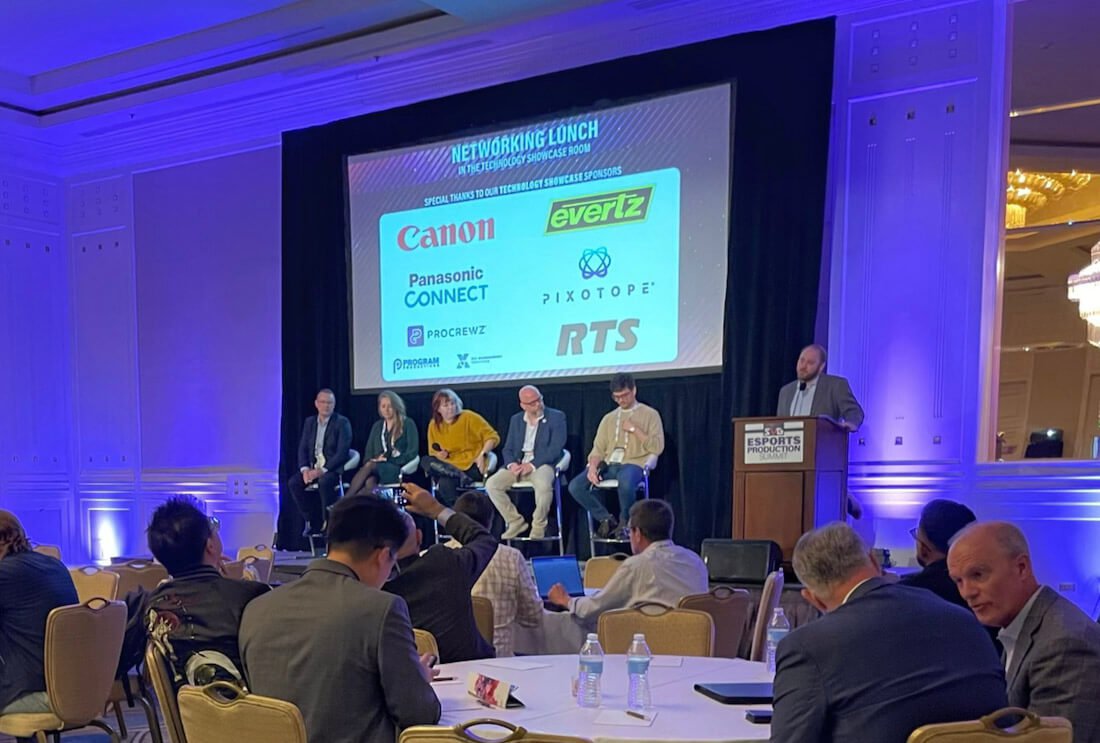
Esports is, by its digital nature, perfectly suited to remote production and global content delivery. By the same token, the wide variety of events and distribution channels necessitates flexible data storage services. Creative teams require solutions that are ahead of the curve and able to anticipate their needs and pain points – long before live coverage begins.
On November 16th, SVG’s Esports Production Summit delved into how industry leaders are leveraging new technologies and workflows to respond to a rapidly changing landscape. One thing that hasn’t changed? Live esports production, like all broadcast production, relies on fast access to files, no matter what they are or where they are stored. As OpenDrives’ own Andre Rievers, speaking on the “The REMI Reality: Creating More Efficient and Cost-Effective Esports Productions” panel, put it, “Regardless of what type of content is being created, if it’s conventional post-produced content, ‘thumbable’ content or live broadcast support, the solution needs to be scalable, modular, and flexible. The concept of traditional storage doesn’t exist anymore, data is not stationary, data is constantly moving. I venture to say that content creators don’t care where the data is anymore. Cloud, on-prem, hybrid – it doesn’t matter.”
“Regardless of what type of content is being created, if it’s conventional post-produced content, ‘thumbable’ content or live broadcast support, the solution needs to be scalable, modular, and flexible. The concept of traditional storage doesn’t exist anymore, data is not stationary, data is constantly moving. I venture to say that content creators don’t care where the data is anymore. Cloud, on-prem, hybrid – it doesn’t matter.” – Andre Rievers
Adaptable and flexible solutions are key to streamlining remote production while enhancing the value of content across platforms. For example, files can be stored in the cloud or on-prem and those same files might be edited and repurposed for broadcast, social media and marketing. Ensuring seamless access and management is the technical backbone of leading esports coverage.
Solutions providers are also tasked with keeping data storage services “invisible” to the end user, said Rievers. “Content creators care about being able to search and find content to push and pull it where they want it to go. They want access that can support their strategy without being bounded by the limitations of the technology.”
To deliver that seamless performance, solutions need to be both able to handle any possible broadcast needs today and be ready for tomorrow’s innovations. Rievers’ fellow panelists were Geoff Bowen, Appear; Allyson Gormley, Riot Games; Lydia Pendergrass, OS Studios; and JD Wu, The Switch. CBS Sports’ Corey Smith served as moderator. They detailed how they’re leveraging customer-centric technology to make remote production more efficient for teams while enhancing the viewer experience.
Streamlining the technology behind data storage services makes complex hybrid architectures simple and efficient under pressure. OpenDrives uses the same code for both on-prem and cloud data storage services, enabling customers to access libraries of millions of files from anywhere within their data environment.
Through an open ecosystem of technology and channel partners, delays importing files into asset management software are reduced or eliminated. Tight integrations with mainstay editing software such as Adobe Premiere Pro and Blackmagic DaVinci Resolve removes bottlenecks loading files during real-time workflows for live broadcasts.

In discussions throughout the day, our partners at SVG delved into key industry trends and issues, from the importance of observers to the in-venue fan experience. Here are some key takeaways from our team at OpenDrives who attended the event:
- One size does not fit all, or most.
- The difference between large and small esports productions is a shift in mindset, not just scale.
- There is no universal definition of REMI, though hybrid infrastructure is usually a hallmark.
- Traditional workflows and post-pandemic ones work best side by side – this isn’t either/or.
If you were unable to attend SVG 2023 Esports Production Summit in Los Angeles, you can watch the recording of “The REMI Reality: Creating More Efficient and Cost-Effective Esports Productions” panel here on SVG Play.
Curious about how you can maximize your next esports production? Drop us a line at hello@opendrives.com.
